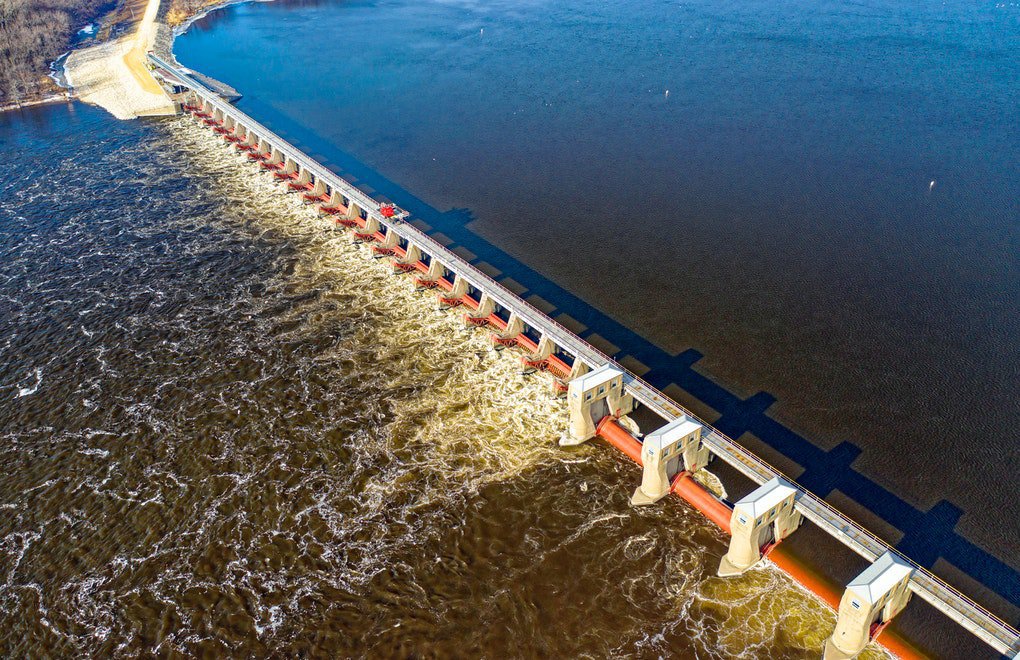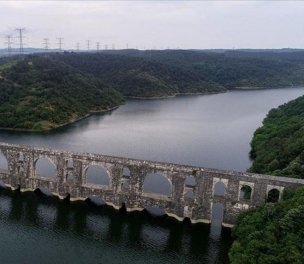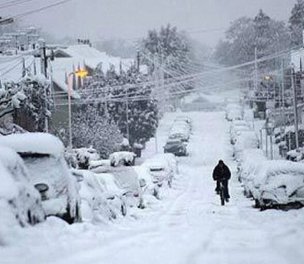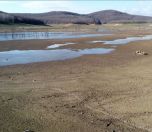* Photo: Tom Fisk / Pexels ** Graphs: İSKİ
The İstanbul Water and Sewerage Administration (İSKİ) has shared the fill rates of the dams providing İstanbul with water as of March 15, 2022 following the recent heavy snowfall that hit the city last week.
According to İSKİ, the fill rate of İstanbul's dams stands at 84.51 as of today. The İSKİ data has shown that the fill rate of the dams has increased by 1.71 percent (10.13 million cubic meters) over the past week.
While the total capacity of the dams is 868.68 million cubic meters, the current volume of water stands at 734.12 million cubic meters as of March 15, 2022. Last March 15, this figure was 541.54 million cubic meters.
CLICK - Snowfall in eastern Turkey, İstanbul in pictures
The İSKİ has also shared a series of graphics showing the change of fill rates of İstanbul dams over the past months and years.
According to the monthly graph, while the fill rate of İstanbul dams stood at 55.25 percent on January 31, 2022, it first increased to 84.01 percent on February 28, 2022 and to 84.51 percent as of March 15:
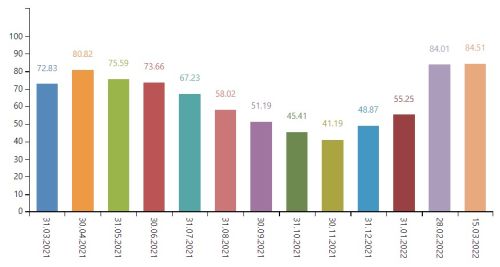
When the yearly graph is considered, the fill rate of the dams was 64.16 percent on March 15, 2020 and 62.34 percent on March 15, 2021. In the five years before 2020, this rate was around 90 percent:
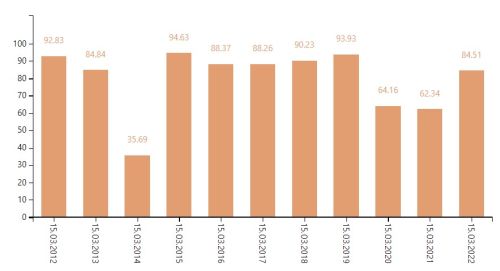
According to the İSKİ, the fill rates of the dams providing İstanbulites with water have been as follows as of March 15:
- Alibeyköy: 78.88 percent
- Büyükçekmece: 83.36 percent
- Darlık: 93.74 percent
- Elmalı: 96.56 percent
- Istrancalar: 100 percent
- Kazandere: 100 percent
- Ömerli: 89.22 percent
- Pabuçdere: 94.87 percent
- Sazlıdere: 58.44 percent
- Terkos: 81.35 percent
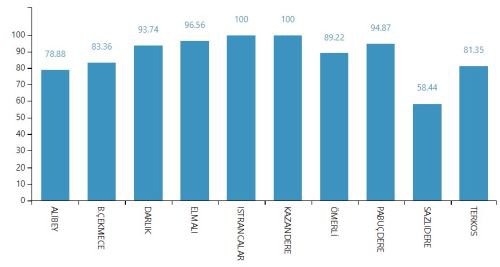
Drought in Turkey
In early December 2021, two dams providing İstanbulites with water, the Pabuçdere and Kazandere dams in Kırklareli province in Thrace, almost ran dry as a result of drought as well as the zoning of their basins for construction and the damages to forest ecosystems.
Contrary to popular belief, Turkey is not rich in water; on the contrary, it is a country "having water shortage" with 519 m3 water per capita. Moreover, it is projected that its population will hit 100 million people in 2030 and the water per capita will decline to 120 m3. These projections indicate that Turkey might be a "water poor country" in the near future.
In January 2021, the NASA Earth Observatory shared two maps showing the groundwater wetness percentile and root zone wetness percentile, warning that the groundwater storage had dropped below in Turkey.
According to the World Wide Fund for Nature (WWF) Turkey, the following cities in Turkey are on the global list of cities facing water risk: Bursa, Mersin, Konya, Adana and Antalya.
"In the last 50 years, half of the wetlands in Turkey have lost their sound structure in terms of quantity and quality of water.
"In other words, a westland area three times the size of Lake Van has lost its ecological function. The risk concerns not only our surface waters, but the condition of our ground waters is also alarming. The loss of our forestlands is another factor paving the way for drought." (SD)




